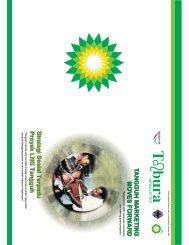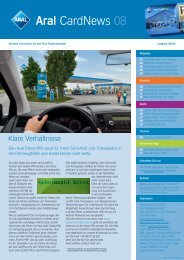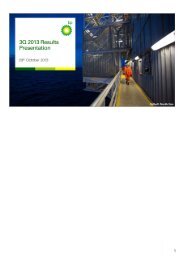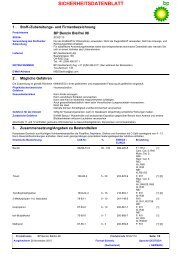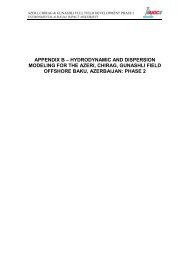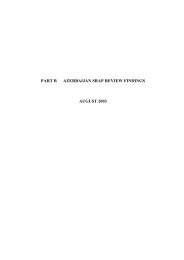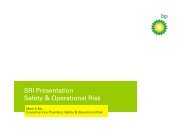Don Field Decommissioning Programme (pdf, 7.8MB) null - BP
Don Field Decommissioning Programme (pdf, 7.8MB) null - BP
Don Field Decommissioning Programme (pdf, 7.8MB) null - BP
Create successful ePaper yourself
Turn your PDF publications into a flip-book with our unique Google optimized e-Paper software.
<strong>Don</strong> <strong>Field</strong> <strong>Decommissioning</strong> <strong>Programme</strong>DON-<strong>BP</strong>-001The seabed along the routes is stable and it is unlikely that a trawl-board would interactwith either line. This will be confirmed by a trawler sweep of the pipelines on completionof decommissioning. Periodic surveys will then be conducted to confirm that adequateburial depths are maintained. If the pipelines are left in situ, the steel will graduallycorrode and the coating would eventually break up, with the possibility that smallfragments of debris from a deteriorating pipeline would be spread from the presentroute of that pipeline.5.6.6 Cost AssessmentSome of the decommissioning cost components would be shared between the pipelinesand umbilicals, eg management, detailed engineering, studies etc, and costs have beencalculated on the basis of pipelines and umbilicals being decommissioned at thesame time.There is a significant cost difference between leave in situ and total removal. However,there is more work and risk associated with the complete removal option and this isreflected in the cost ranking. It is also reflected in the safety risks where the completeremoval option results in a safety exposure to personnel that is greater than the otheroptions. The partial removal option has a small cost penalty but significantly reduces thefishing snagging hazard.5.7 Recommended <strong>Decommissioning</strong> Option for the 8in Pipelines(PL598 and PL599)The options for decommissioning the 8in pipelines have been assessed in terms oftechnical feasibility, safety risk, environmental impact, societal impact and cost.Technical issues do not constrain the selection of any option, but the increased safetyrisk associated with removal of the line is a factor. There are no significant environmentalconcerns associated with any of the options.The main area of concern for the evaluation centres on the possible effects of thepresence of the line and, in particular, future deterioration of the line and the potentialrisk this poses for fishing activity. The pipeline has been present and clearly marked onnavigation charts for over 17 years.The recommended option for the 8in pipelines is to leave in situ with selective removal,as this satisfied the assessment criteria best, along with deferral of the NLGP crossing.An independent review of the pipeline options was performed by Atkins Boreas [10.4],which supports <strong>BP</strong>’s comparative assessment conclusion to leave in situ with selectiveremoval of the 8in pipelines.<strong>BP</strong>, in parallel with work on <strong>Don</strong> decommissioning, will continue to explore othercommercial options for both the infrastructure and the fields.PipelinesMay 2011 10-29




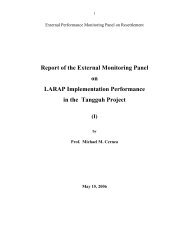
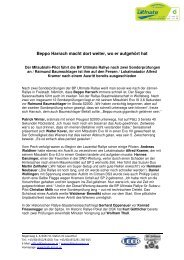
![[PDF] Deepwater Horizon: Accident Investigation Report - BP](https://img.yumpu.com/51697031/1/190x245/pdf-deepwater-horizon-accident-investigation-report-bp.jpg?quality=85)
